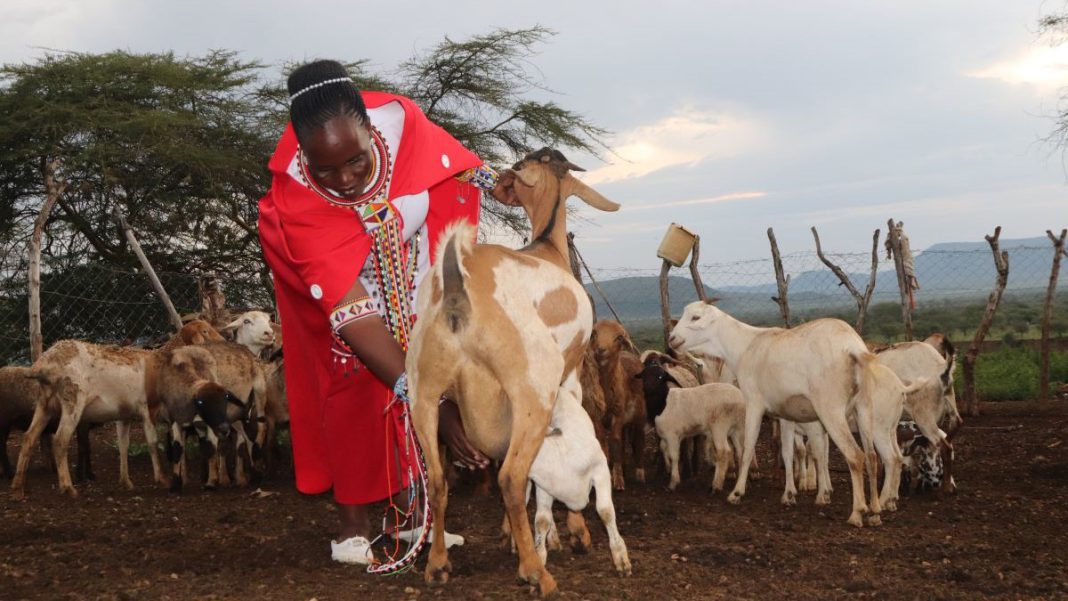KENYA: As the sun dips below the horizon, painting the sky with hues of orange, the tranquil beauty of Narok County provides the backdrop for a tale of resilience and hope. Lilian Saruni, adorned in traditional Maasai attire, leads her goats back to their homestead in Nkorienito village, Suswa. Amidst the joyous laughter of children playing and the playful antics of puppies, Saruni’s story unfolds, shedding light on the deeply entrenched practice of Female Genital Mutilation (FGM) and the courageous efforts to end it.
A Journey of Resilience: Lilian Saruni’s Struggle
At 48 years old and a mother of seven, Saruni’s journey has been marked by hardship and determination. Married off at the tender age of 15, immediately after undergoing FGM, she faced the challenges of polygamous marriage and the burden of raising children in a patriarchal society. However, it was through education and awareness brought by organizations like Oltoilo Le Selenkei, that she founded, that Saruni found the strength to break free from the cycle of FGM. Today, she leads efforts to rescue girls and promote alternative rites of passage, becoming a beacon of change in Narok County.
As the world observes the International Day of Zero Tolerance for FGM, Saruni’s story serves as a poignant reminder of the importance of amplifying the voices of survivors in the fight against this harmful practice. With the theme “Her Voice. Her Future.”, the global community emphasizes the need to empower women like Saruni to drive behavioral change and end FGM once and for all.
Also Read: Legislation for Increased Midwife Deployment Holds Promise to Reduce Maternal Deaths in Kenya
According to the World Health Organization (WHO), over 200 million girls and women worldwide have undergone FGM, with millions more at risk. Despite progress, the pace of change remains inadequate to meet the 2030 target for elimination. Recognizing FGM as a violation of human rights, the United Nations underscores its severe health and psychological consequences.
In Kenya, where FGM was outlawed in 2011, progress has been made, yet challenges persist. Narok County, with a prevalence rate of 51%, illustrates the uphill battle. Organizations like Amref Health Africa tirelessly work to dismantle myths and engage communities in dialogue. However, resistance, especially from traditional leaders towards chiefs, remains a significant obstacle.
Empowering Voices, Enabling Change
Chief Dansen Reson, a champion against FGM, emphasizes the legal repercussions for perpetrators and the evolving tactics used to circumvent detection. Despite these challenges, Saruni’s hope for a future free from FGM resonates deeply. Her journey, characterized by sacrifice and determination, embodies the resilience of women in the face of adversity.
Also Read: In Kenya’s Dry North, a Steady Supply of Water Is Putting Smiles on Faces
As darkness descends over Saruni’s homestead, her tears reflect both the pain of her past and the hope for a brighter tomorrow. The fight against FGM in Southern Kenya requires a concerted effort to challenge deep-seated cultural norms. Only through the collective voices of grassroots activists, community leaders, and government institutions can we pave the way for a future where no girl has to endure the horrors of FGM.
Also Read: Restoring Dignity: Kenyan Women Receive Free Corrective Surgery to Overcome Obstetric Fistula
Saruni’s fervent wish is for her community to be free from FGM, sparing future generations from the suffering she endured. “I did not have an education and was married to someone too old for me,” she reflects tearfully. “My children now suffer without a father to guide them. He is too old now.” Her words echo across the sandy river, carrying with them the determination to create a better future for all women in Narok County and beyond.
Also Read: Johnstone Sikulu Wanjala: A Catalyst for Change in Kenya and Beyond



